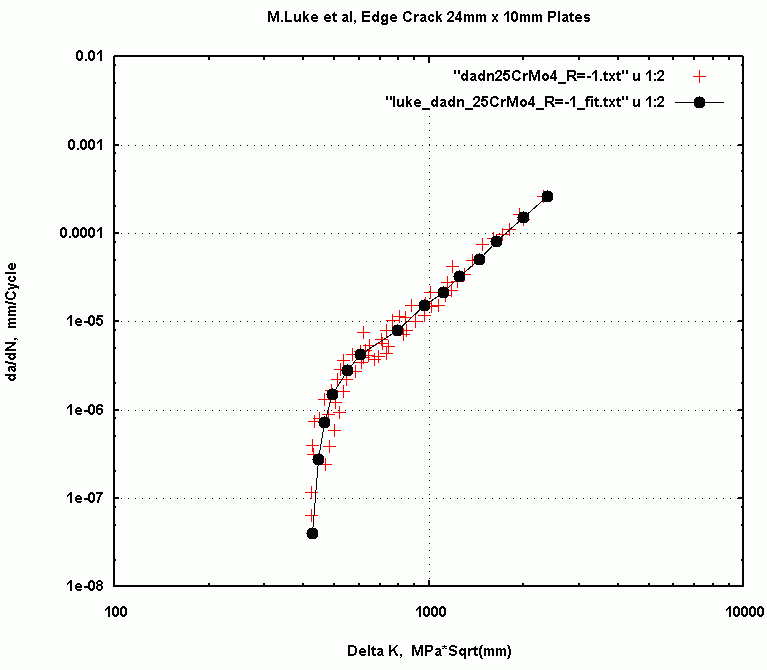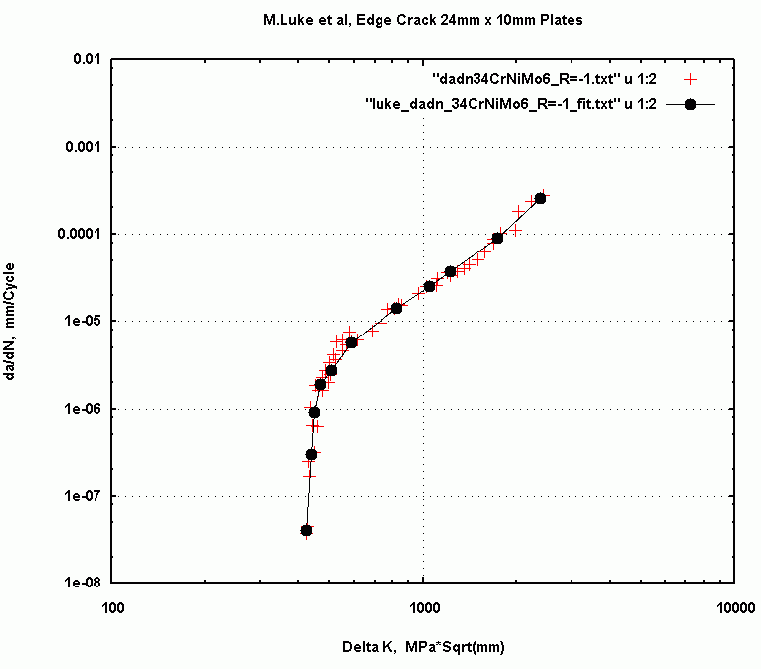
Fig. 1: Fitted da/dN points of 25CrMo4 Steel.

Fig. 1: Fitted da/dN points of 25CrMo4 Steel.

Fig. 2: Fitted da/dN points of 34CrNiMo6 Steel.
For the crack initiation part of the simulation four data sets were merged into
one file
(Raw available here).
and the "fitted" stress-strain-life curve
(Fitted file available here)
was then used to predict crack initiation life for an uncracked sample subjected
to the same nominal stress history. The original paper by Luke et al did not
report any initiation tests, but the simulations are presented below to serve as
a comparison alongside the crack propagation predictions.
The sub-blocks are divided into sub-block segments and the arrangement of
the segments is described in the text file
here.
A program was used to convert the segment descriptors into a half cycle by
half cycle sequence. The program is available here:
A peak by peak history of membrane (Pm) and bending (Pb=0.0) are available
in the file
c100histPm.txt (1 Mb)
In the history the "100" value for the peak is proportional to the test reference stress
for sub-block 1 (the lowest stress sub-block). The arrangement of the sub-blocks and
their maxima stresses is a bit complicated and the reader is referred to the
paper by Luke et al for a full explanation.
Other run-time files are:
34CrNiMo6 Steel: Delta S= 200 mpa : Fracture at 77688 cycles @ a= 3.97 mm 0.027 sec cpu Delta S= 120 mpa : Fracture at 701701 cycles @ a= 6.70 mm 0.126 sec cpu 25CrMo4 Steel: Delta S= 200 mpa : Fracture at 77688 cycles @ a= 3.72 mm 0.021 sec cpu Delta S= 120 mpa : Fracture at 987701 cycles @ a= 6.49 mm 0.152 sec cpu (See Luke et al for experimental crack length vs. cycles data)The higher stress level simulations are within a factor of two of experimental lives, while
Damage computation was made for each half cycle. Both materials simulated
at Delta S= 200 mpa failed at the first large +-280 mpa cycle in the 4th
history repetition.
It should be noted that the simulation program corrects for material memory
but it does not presently compensate for overloads. The mean stress correction
and the crack closure code segments have been turned off, resulting in a simulation
that follows BS7910-2005. For this particular load history material memory compensation
is not expected to alter the results greatly.
The simulation program generates a report for each test and the pdf files are
available here: